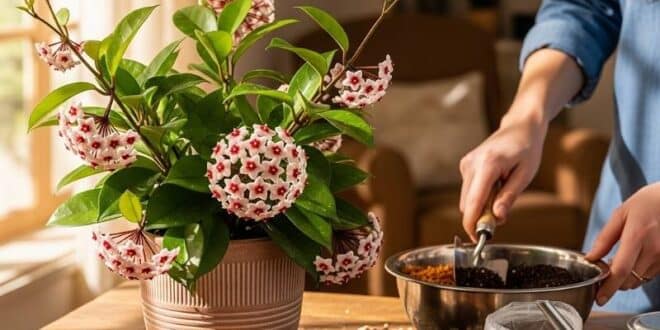Understanding the Right Soil Mix
If you’ve ever admired the waxy, elegant leaves and delicate blooms of a Hoya plant, you know they’re a special addition to any home. But for many plant lovers, the journey to a happy Hoya can be filled with a few stumbles. One of the most common—and often misunderstood—challenges is getting the soil right.
Forget everything you know about standard potting soil. The truth is, the perfect hoya plant soil is the key to preventing root rot, encouraging strong growth, and finally, getting those beautiful flowers to appear. This isn’t just about a simple bag of dirt; it’s about crafting an environment where your Hoya can truly thrive.
Why Your Hoya Needs a Special Soil Mix
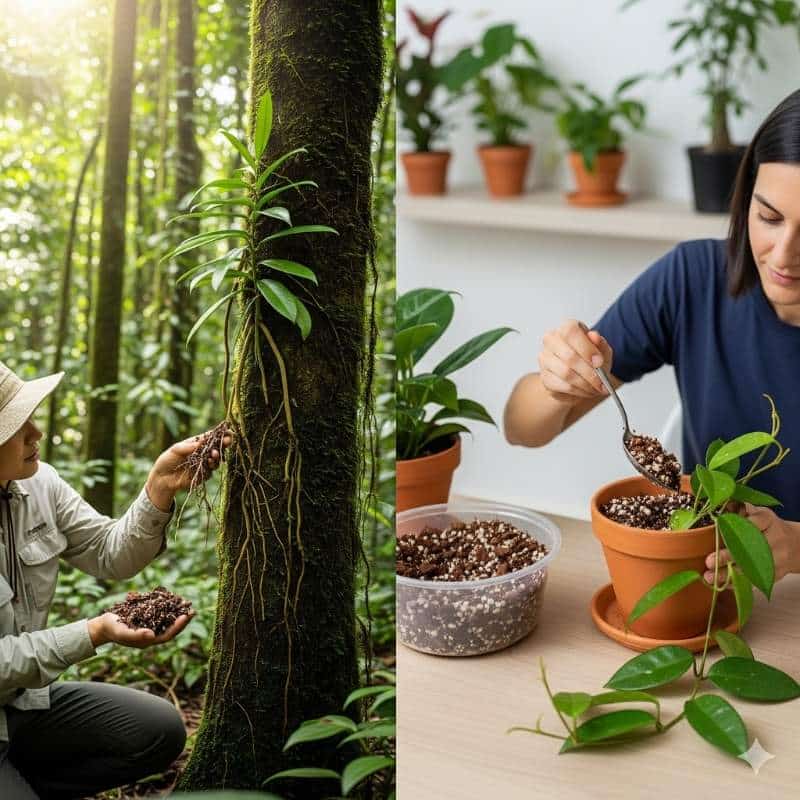
To understand what makes the best soil for Hoyas, we need to look at their natural habitat. Many Hoya species are epiphytes or semi-epiphytes. This means that in the wild, they don’t grow in the ground at all. Instead, they cling to trees, rocks, or other plants, getting their nutrients from the air and rain, with their roots often exposed.
This unique lifestyle dictates their needs in a pot. Their roots are not designed to sit in a dense, waterlogged environment. They need to breathe. Standard potting soil, while great for many houseplants, compacts easily and retains too much moisture, which is the number one cause of root rot for Hoyas. The goal of a good hoya soil mix is to mimic the airy, fast-draining conditions of their native home.
The Key Ingredients for the Perfect Hoya Soil Mix
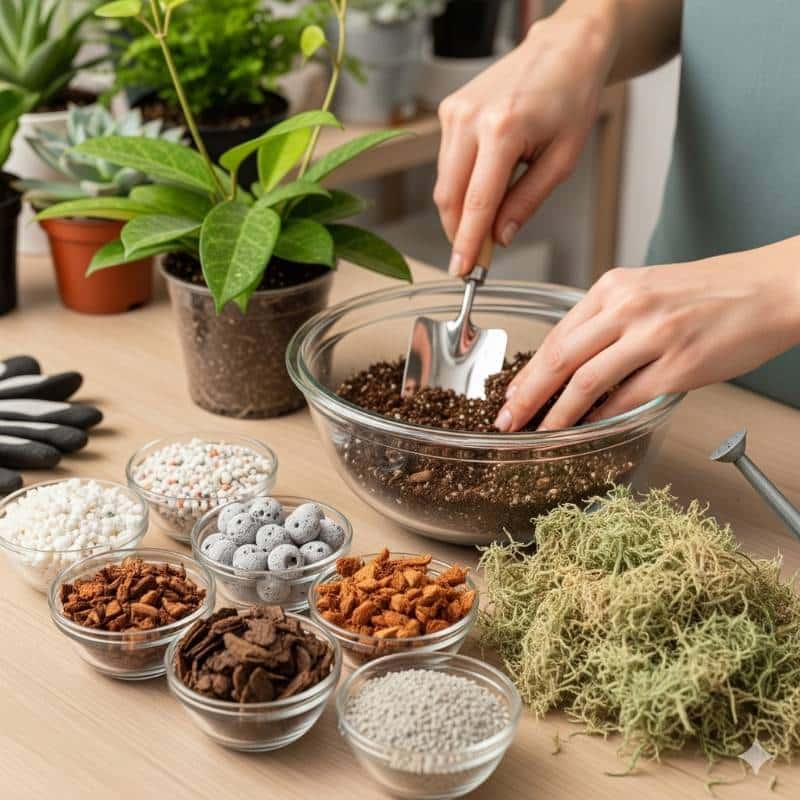
The best soil for a Hoya is less “soil” and more a blend of components that provide drainage, aeration, and just the right amount of moisture retention. Here’s a breakdown of the essential building blocks:
- A Base Potting Mix: Start with a high-quality, lightweight potting mix. This provides a small amount of nutrients and a base structure for your mix. Look for one that doesn’t contain a lot of peat moss, as it can become very dense and water-retentive over time.
- For Excellent Drainage & Aeration: This is the most critical part. Your mix needs chunky materials that create pockets of air and let water flow right through.
- Perlite: The classic choice. These white, lightweight volcanic rocks are fantastic for aeration and drainage.
- Pumice: Similar to perlite but heavier. It won’t float to the top of the pot and provides excellent airflow.
- Orchid Bark: The gold standard for many Hoya enthusiasts. The large pieces of bark create fantastic air pockets and also help to anchor the roots.
- For Just-Right Moisture Retention: While we want a fast-draining mix, a little moisture retention is necessary so you don’t have to water every single day.
- Coco Coir: A fantastic alternative to peat moss. It holds a little bit of water but also remains airy and doesn’t compact.
- Sphagnum Moss: A small amount can be mixed in to help retain moisture. It’s particularly useful for younger Hoyas or those in very dry environments.
My Simple, Tried-and-True Hoya Potting Mix Recipe
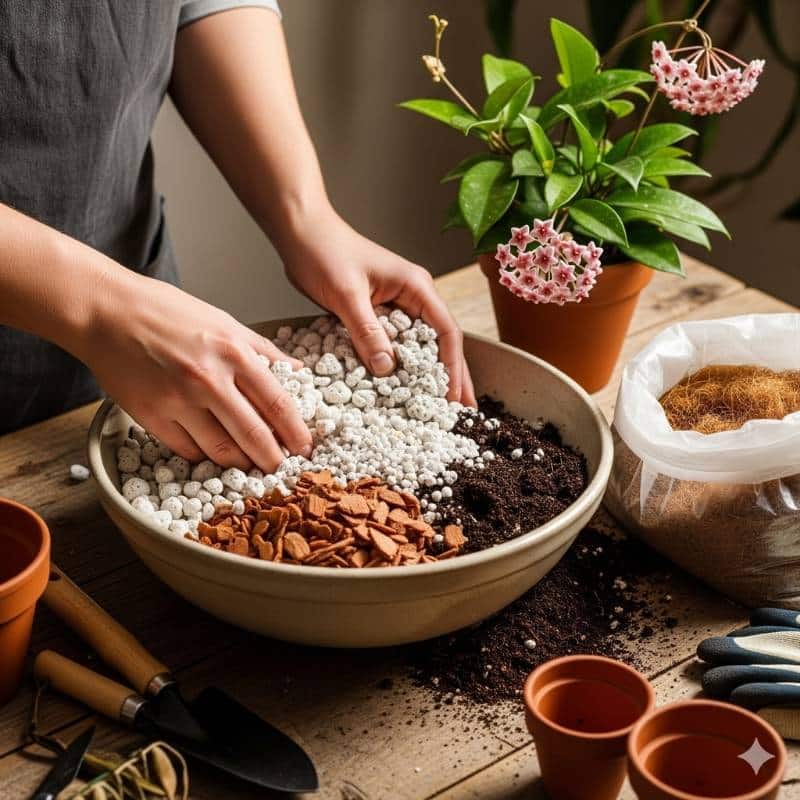
Don’t get overwhelmed by all the options. You can create a fantastic mix with just a few ingredients. This is a great starting point for most Hoya varieties:
- 1 part high-quality potting mix
- 1 part orchid bark
- 1 part perlite or pumice
Simply mix these ingredients thoroughly in a bucket or large bowl. You’ll notice the texture is loose, chunky, and very light. That’s exactly what you’re looking for. For Hoya varieties with thinner leaves that prefer slightly more moisture, you could add a half part of coco coir to this recipe.
What NOT to Use in Your Hoya Soil
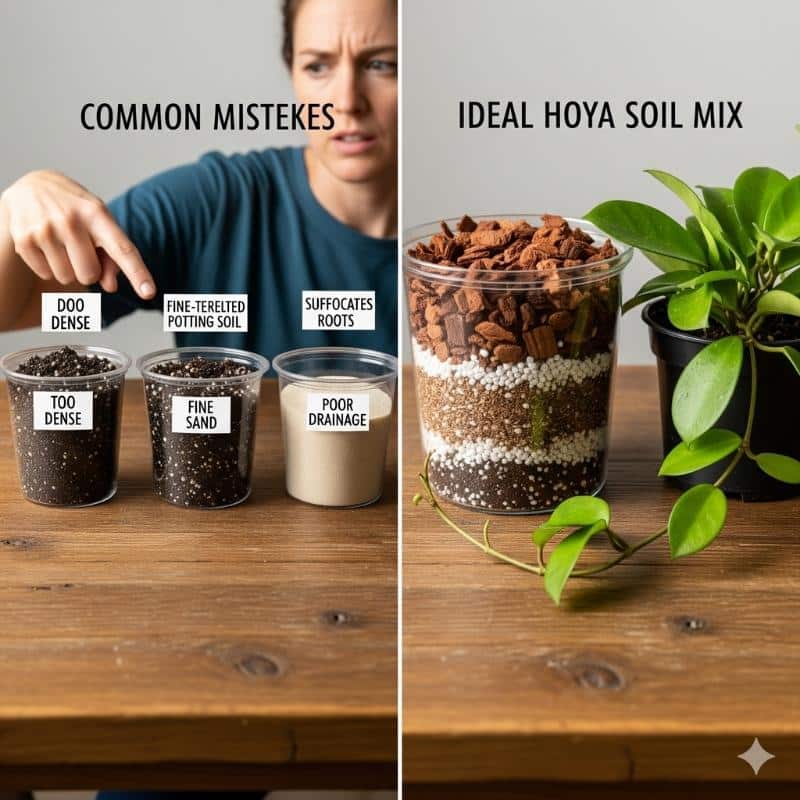
Just as important as knowing what to add is knowing what to avoid. Steer clear of these common mistakes:
- Garden Soil: It’s far too dense and heavy for a Hoya and often contains pests or pathogens.
- Cheap, Generic Potting Soil: These mixes often contain a lot of peat and can become a solid, impenetrable block once watered, suffocating the roots.
- Fine Sand: Unless it’s a very coarse horticultural sand, fine sand can actually fill in the gaps between other components, reducing aeration.
Repotting Your Hoya with the Right Soil
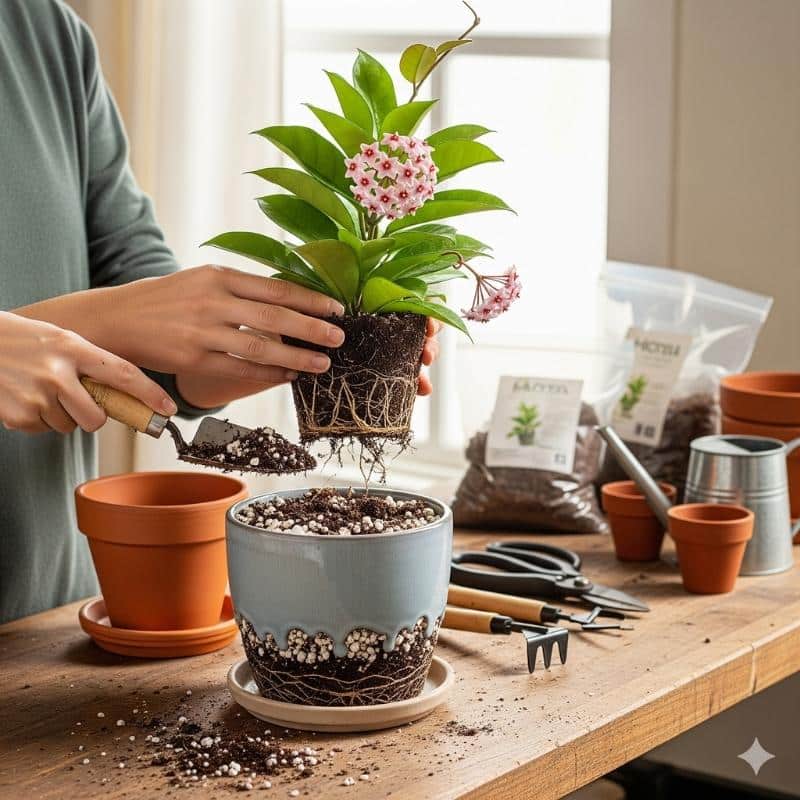
Once you have your perfect mix, repotting is a simple process. Repot your Hoya when it’s root-bound or when you want to refresh the soil.
- Gently remove the plant from its old pot.
- Carefully shake or tease away as much of the old soil as possible, being mindful not to damage the delicate roots.
- Place a small layer of your new hoya plant soil in the bottom of the pot.
- Position your plant and fill in around the roots with the mix, tapping the pot gently to help the soil settle.
- Do not water immediately. Wait a few days to a week to let any small root injuries heal.
Beyond the Soil: A Quick Note on Hoya Care
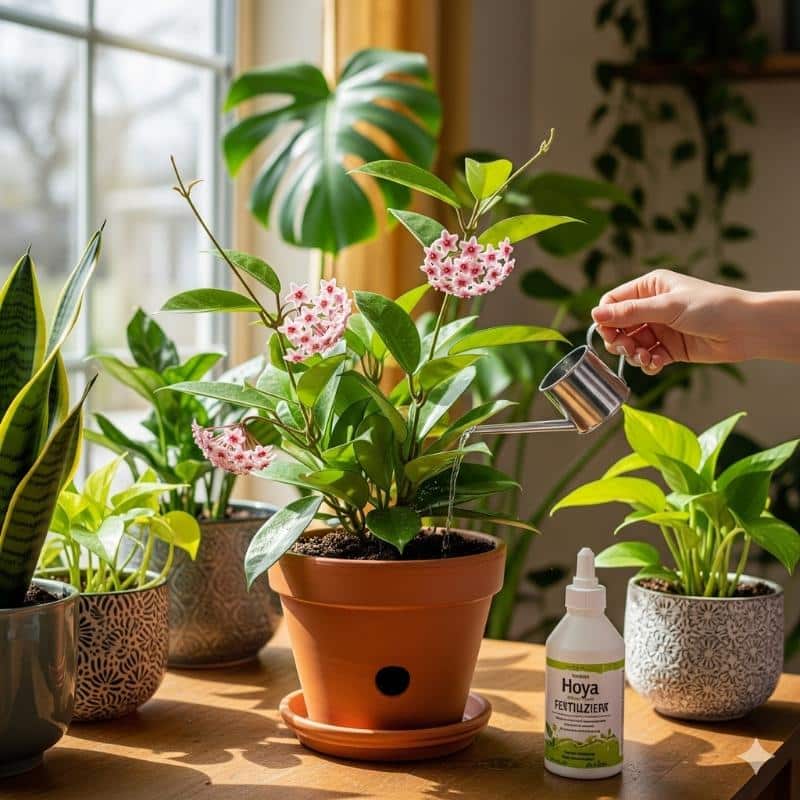
While the right soil is foundational, don’t forget the other key elements of Hoya care. They love bright, indirect light and prefer to dry out between waterings. Use a well-draining pot with a drainage hole, and consider using a fertilizer during the growing season (spring and summer).
By providing your Hoya with the airy, fast-draining home its roots crave, you’ll set it up for a long, healthy, and beautifully blooming life. It’s a small change that makes all the difference.

